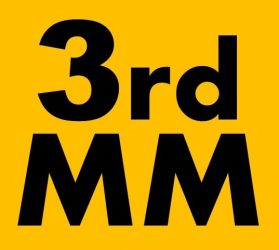~Written and posted on 6 August 2020~
The ammonium nitrate blast that left Beirut devastated two days ago was massive. It completely crippled the vital city port and left a crater with a diameter of 124 meters – larger than the length of a football field.
Scores have been killed and thousands injured, and an estimated hundreds of thousands left homeless as walls were ripped off buildings up to a mile away. Even for war torn Beirut, this level of devastation from a single blast has never been seen before.
Today, they continue to dig through rubble, treat the critically wounded, and bury the dead. It is a truly tragic and sorrowful moment for Lebanon.
Today also marks the 75th anniversary of the bombing of Hiroshima during WWII. In Hiroshima almost everything within 1.6 kilometres (1.0 mi) of the point directly beneath the explosion was utterly destroyed.
The first effect of the blast was a blinding light, accompanied by an immense fireball. The Hiroshima fireball was 370 meters (1,200 ft) in diameter, with a surface temperature of 6,000 °C (10,830 °F).
Simultaneous fires started throughout the blast-damaged area by fireball heat, overturned stoves, furnaces, and electrical fires. Twenty minutes after detonation, all the fires merged into a firestorm, pulling in surface air from all directions to feed an inferno which consumed everything.
Accurate casualty figures are impossible to determine, because many victims were cremated by the firestorm, along with all record of their existence. It’s estimated that 90,000 to 146,000 were killed—the majority civilians. (The feature image of this post shows the shadow of a person incinerated during the blast.)
According to the Lebanese authorities, the blast in Beirut was caused by the improper storage of 2,750 tons of ammonium nitrate, which is equivalent to 1,800 tons of TNT. The Hiroshima bomb was equivalent to 15,000 tons of TNT.
Always Remember…
I don’t know exactly how or why, but as a youth I was led to believe that the bombing of Hiroshima helped end the war sooner, and it saved lives. Some important historical figures have taught me otherwise:
Dwight D. Eisenhower wrote in his memoir The White House Years:
In 1945 Secretary of War Stimson, visiting my headquarters in Germany, informed me that our government was preparing to drop an atomic bomb on Japan. I was one of those who felt that there were a number of cogent reasons to question the wisdom of such an act. During his recitation of the relevant facts, I had been conscious of a feeling of depression and so I voiced to him my grave misgivings, first on the basis of my belief that Japan was already defeated and that dropping the bomb was completely unnecessary, and secondly because I thought that our country should avoid shocking world opinion by the use of a weapon whose employment was, I thought, no longer mandatory as a measure to save American lives.
“When I asked General MacArthur about the decision to drop the bomb, I was surprised to learn he had not even been consulted. What, I asked, would his advice have been? He replied that he saw no military justification for the dropping of the bomb. The war might have ended weeks earlier, he said, if the United States had agreed, as it later did anyway, to the retention of the institution of the emperor.” (Cousins 1987, pp. 65, 70–71.)
And if the death of 100,000 people in Hiroshima wasn’t enough, three days later they dropped another nuclear weapon on Nagasaki killing up to 80,000 more.
Of personal interest to my heritage, up to 10,000 Koreans (conscripts to Japan) died in the bombings as well.
Total killed in Hiroshima + Nagasaki: 129,000 – 226,000.
Pray for the current victims in Beirut. Remember the past ones too. All war leads us closer to repeating atrocity.
God, please have mercy. Have mercy on us all.
…
An excellent essay about the topic: The Hiroshima Myth
Never miss a post. Follow Third Millennium Man.
Other article sources (Wikipedia): Atomic bombings of Hiroshima and Nagasaki, Debate over the atomic bombings of Hiroshima and Nagasaki


